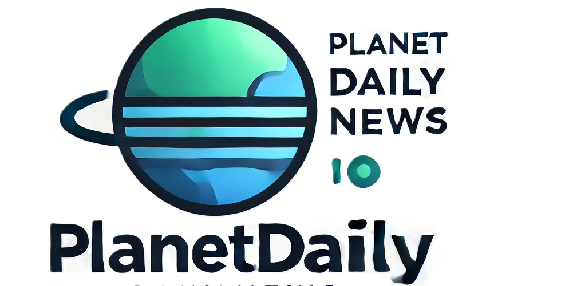January 10, 2025, brought a succession of significant events that influenced global markets, economic policies, and business strategies. The decisions and data released on this day had profound impacts, affecting everything from financial markets to sectors like technology, retail, and energy. This article provides a detailed analysis of the key events and their impact on the global economy and business landscape.
U.S. Job Market Exceeds Expectations
The U.S. Department of Labor announced that 256,000 jobs were created in December 2024, significantly surpassing projections of 160,000. This robust growth led to a reduction in the unemployment rate, now at 4.1%. These figures demonstrate the resilience of the U.S. economy and business sector during a time of global uncertainty.
What Does This Mean for Monetary Policy?
The unexpected strength in the job market suggests that the Federal Reserve may maintain high interest rates for longer than anticipated. This type of policy is essential to contain inflation but also has direct consequences on borrowing costs, impacting businesses and consumers operating within the economy and business sphere.
The labor market’s resilience underscores the complexity of balancing economic growth with inflation control. While businesses benefit from a robust workforce, prolonged high interest rates can dampen growth, forcing companies to adjust their financial strategies.
Furthermore, these labor market developments signal potential shifts in wage growth dynamics, as employers compete for talent. This competition can drive up wages, influencing pricing strategies and adding another layer to inflationary pressures within the economy and business sector.
Stock Market Reaction to Employment Data
Major U.S. stock indices reacted negatively to the employment report. The S&P 500 fell by 1.58%, the Dow Jones Industrial Average dropped by 1.66%, and the Nasdaq Composite declined by 1.64%.

Investor Sentiment and Market Trends
Investor sentiment remains cautious, as concerns about inflation potentially delaying interest rate cuts persist. These dynamics deeply influence strategies within the economy and business sectors, shaping investment approaches across U.S. and global markets.
Additionally, this cautious sentiment affects industries reliant on consumer spending and investment inflows. Companies are closely monitoring these trends, adjusting their portfolios and risk management strategies to align with changing market conditions.
The ripple effects of these market dynamics also extend to venture capital and startup ecosystems. Entrepreneurs and investors in these spaces are recalibrating their expectations and strategies, emphasizing resilience and operational efficiency to thrive in a fluctuating economy and business landscape.
Movements in Treasury Yields and Currency Markets
Yields on U.S. Treasury notes rose significantly. The yield on the 10-year note increased by 9.7 basis points, reaching 4.778%. Simultaneously, the U.S. dollar strengthened, with the dollar index rising 0.46% to 109.70.
Impact on Global Markets
Higher yields reflect expectations of prolonged elevated interest rates, affecting international investments and trade—key aspects of the global economy and business framework. A stronger dollar also poses challenges for multinational corporations that depend on global markets for revenue.
Emerging markets, in particular, feel the strain of a stronger dollar, as their borrowing costs in foreign currencies rise. This trend highlights the interconnectedness of the global economy and business environment, where monetary policy in one region reverberates across the globe.
In response to these developments, central banks worldwide are reassessing their monetary policies to strike a balance between growth and inflation control. The decisions they make will play a pivotal role in shaping the trajectory of the global economy and business sector in 2025.
UK Retail Sector Faces Inflation Challenges
In the United Kingdom, retail giants such as Tesco and Marks & Spencer reported significant increases in food prices and operational costs. Tesco, for example, revealed that its expenses had risen by £250 million due to changes in National Insurance contributions.
Calls for Government Action
Retail leaders have urged the UK Chancellor to implement measures to mitigate inflation risks and stimulate growth. With an estimated £7 billion increase in costs for retailers, the effects are deeply felt across the economy and business sectors, influencing consumer behavior and market dynamics.
As inflation persists, retailers are also exploring innovative strategies to manage costs, including supply chain optimization and technology-driven efficiencies. These measures aim to balance profitability with affordability for consumers, ensuring long-term sustainability in the economy and business space.
Moreover, consumer behavior is shifting, with a growing preference for private-label products and discounts. Retailers are adapting to these trends, which are reshaping the competitive landscape and influencing pricing strategies across the economy and business ecosystem.
Delta Air Lines Reports Positive Performance
Delta Air Lines announced robust financial results for Q4 2024, leading to a 7% rise in its shares. The company also presented an optimistic forecast for 2025, signaling growing confidence in the travel industry.
Implications for Travel and Tourism
Delta’s success reflects the recovery of the travel sector, a vital component of the global economy and business ecosystem. This resurgence also benefits associated industries such as hospitality and tourism, driving economic growth worldwide.
The travel industry’s rebound is bolstered by pent-up demand and increased consumer confidence. However, rising fuel costs and geopolitical tensions remain challenges that could shape future trends within the economy and business sectors linked to travel.
Additionally, advancements in sustainable aviation fuel (SAF) are gaining traction, with airlines like Delta investing heavily in reducing their environmental footprint. These efforts align with broader trends toward sustainability within the global economy and business landscape, appealing to environmentally conscious travelers and stakeholders.

Taiwan Semiconductor Manufacturing Co. (TSMC) Advances
TSMC reported revenues of NT$868.46 billion in Q4 2024, representing an annual growth of 34% and exceeding forecasts. Its shares rose by 1.2% in pre-market trading.
Importance for Technology and Innovation
As a cornerstone of the tech industry, TSMC’s performance highlights the growing demand for advanced semiconductors. This trend underscores the critical role of technology within the economy and business landscape, where innovation drives growth and competitiveness.
TSMC’s success is not only a testament to its operational efficiency but also to the broader demand for semiconductors across industries such as automotive, healthcare, and telecommunications. These sectors rely heavily on technological advancements to remain competitive in the global economy and business environment.
Furthermore, the ongoing development of AI and machine learning technologies continues to fuel demand for cutting-edge semiconductor solutions. TSMC’s leadership in this space positions it as a pivotal player in shaping the future of technology and its impact on the economy and business sectors worldwide.
Insurance Industry Faces Rising Claims
Insurance companies reported a sharp increase in claims resulting from the Los Angeles wildfires, with damages estimated between $135 billion and $150 billion.
Challenges for Risk Management
The financial impact of natural disasters underscores the importance of effective risk management strategies. These challenges resonate across the economy and business framework, influencing insurance premiums, policies, and long-term planning.
Insurance firms are increasingly leveraging data analytics and AI to predict and mitigate risks associated with natural disasters. These technologies are becoming essential tools for adapting to the evolving challenges within the global economy and business sectors.
The frequency of extreme weather events is prompting collaborations between insurers, governments, and private sectors. Together, they aim to build resilient infrastructure and implement proactive measures to minimize economic losses, aligning efforts with sustainability goals within the economy and business landscape.
Global Oil Prices Reach Three-Month High
Oil prices surged by nearly 3%, reaching a three-month high. This increase was driven by expectations of economic growth and potential supply constraints.
Effects on Businesses and Consumers
Rising oil prices escalate operational costs in sectors such as manufacturing and transportation. These shifts impact inflationary trends, shaping broader dynamics in the economy and business environment globally.
Moreover, fluctuating oil prices often lead to shifts in energy policies and increased investment in renewable energy sources. Businesses are increasingly exploring sustainable alternatives to reduce reliance on fossil fuels, aligning their strategies with the evolving demands of the economy and business landscape.
This shift is also encouraging innovation in energy storage and distribution technologies, creating new opportunities for investment and growth across the global economy and business ecosystem.
Conclusion
January 10, 2025, stood out as a landmark day for the global economy and business sectors, with significant events spanning labor markets, technological advancements, retail, and energy. These developments underscore the interconnected nature of global markets and the critical importance of staying informed about trends shaping the economy and business landscape.
The decisions made by businesses, governments, and investors in response to these events will be crucial in determining the course of economic policies and growth in 2025. Meanwhile, the world continues to watch closely, adjusting strategies to face challenges and seize opportunities presented by this dynamic landscape.
In this increasingly interconnected world, understanding these events is paramount for stakeholders across the economy and business sectors to navigate complexities and drive sustainable growth. The lessons learned from these developments will undoubtedly shape the future trajectory of the global economic system, influencing decision-making for years to come.
From labor market dynamics to advances in technology and sustainability, the global economy and business ecosystem remain vibrant and full of potential. Stakeholders must continue to adapt and innovate, ensuring resilience and progress in an ever-changing world.
Source: Investopedia




